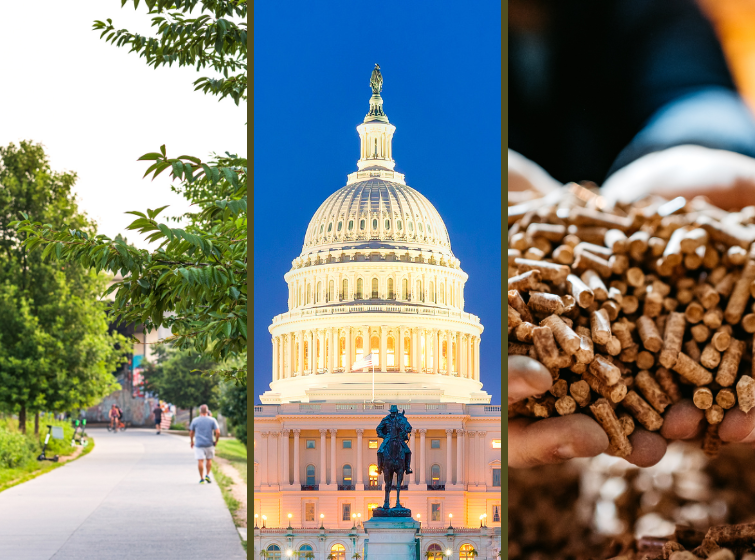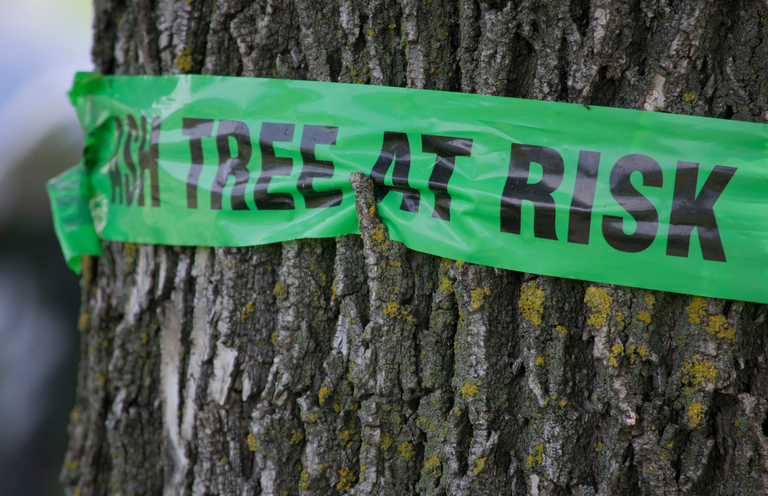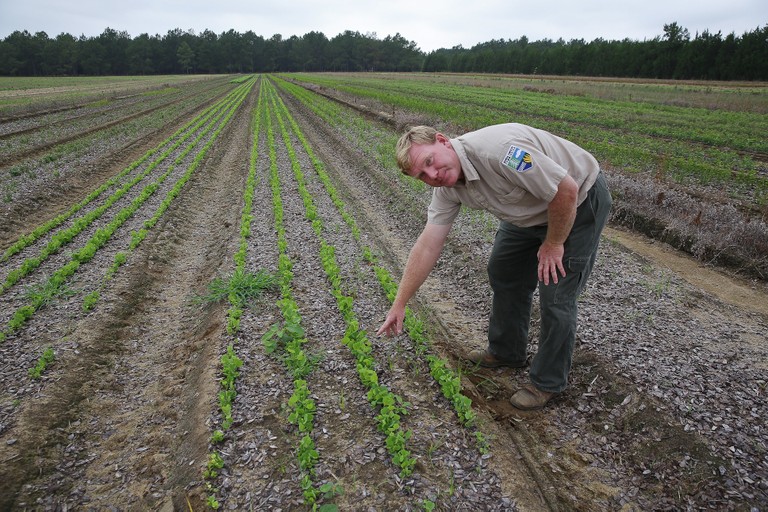Updates & Blog
Policy At-a-Glance: August – September 2023

USDA Announces IRA Urban and Community Forestry Partner Funding Recipients
The USDA Forest Service is investing more than $1 billion in nearly 400 projects nationwide to increase access to trees and the social, health and economic benefits they provide.

USDA Press | The USDA Forest Service is investing more than $1 billion in nearly 400 projects nationwide to increase access to trees and the social, health, and economic benefits they provide.
Of the total funding, the Forest Service awarded $209 million to community-based organizations, tribes, municipal and state governments, non-profit partners, universities, and other eligible entities across the Southern Region. These investments will plant and maintain trees in disadvantaged urban communities, tackle the climate crisis, and support jobs and workforce development.
The funding, made possible by the Inflation Reduction Act, is part of a historic $1.5 billion investment in the Forest Service’s Urban and Community Forestry Program. The funding supports local communities and the organizations that serve them as they work to increase tree cover in disadvantaged spaces and boost equitable access to nature.
SGSF Policy Director says: “This announcement is the second part of a generational investment in Urban and Community Forestry work in underserved communities, made possible through the Inflation Reduction Act. It builds upon $65.9 million in funding released to state forestry agencies in the South earlier this year to support our highly successful pass-through grant programs. SGSF member agencies are poised to be leaders and ready partners in making sure all these funds make an enormous impact in our region’s communities.”
USDA Announces Notice of Funding Opportunity for IRA Forest Landowner Support
USDA will Invest $150M to Connect Underserved and Small Acreage Forest Landowners to Emerging Climate Markets as part of its Investing in America Agenda

USDA Press | The U.S. Department of Agriculture’s Forest Service is making $150 million from President Biden’s Inflation Reduction Act, the largest climate investment in history, available to help underserved and small acreage forest landowners connect to emerging voluntary climate markets. These markets can provide economic opportunities for landowners and incentivize improved forest health and management. Secretary Vilsack announced the funding opportunity at the Sustainable Forestry and African American Land Retention Conference on the heels of the one-year anniversary of the Inflation Reduction Act. This builds on investments in the President’s Bipartisan Infrastructure Law for forest health treatments, including through the creation of competitive grants to non-Federal forest landowners.
SGSF Policy Directory says: “Climate and forest resilience markets, including those for carbon and water, represent a new opportunity for landowners, particularly those identified as small and/or underserved, to make their forests a revenue-generating asset. This funding opportunity, along with the funding state agencies are receiving to work with established partners in growing and improving outreach to underserved landowners, will make a huge difference in our region.”
EPA and USFWS Propose Pilot Project for Pesticide Application in Threatened and Endangered Species Habitat
SGSF submits comments highlighting potential impacts to the forestry sector

Through its Vulnerable Species Pilot, the U.S. Environmental Protection Agency (EPA) has been identifying endangered species that are vulnerable to pesticides, developing mitigations to protect them from pesticide exposure, and will apply the mitigations to many types of pesticides. In response to concerns raised by the SGSF Forest Health Committee about potential impacts to HWA, EAB and other treatment programs if the pilot was expanded to include all species, the committee and SGSF pPolicy Director worked together to craft and submit comments to the EPA.
SGSF Policy Director says: “It is important to highlight, at every opportunity we can, the importance of neonicotinoids in preventing forest health outbreaks – particularly for Emerald Ash Borer and Hemlock Wooly Adelgid. As EPA and USFWS consider new approaches to managing pesticides into the future, SGSF is making sure they understand this importance, as well as the science behind how application impacts are managed in forestry settings.”
Investments in Forest Research and Development
USDA Invests $20 million from IIJA for Research on Forest Restoration, Including five Southern Research Station projects

USDA Press | The U.S. Department of Agriculture’s Forest Service is investing $20 million to fund 30 research studies to develop new technologies and data that will increase restoration of degraded forests, grasslands, and watersheds. The funding, provided by President Biden’s Bipartisan Infrastructure Law, also supports shared efforts between agency scientists, tribes, states, academia, and non-government organizations.
The nation’s forests, grasslands and watersheds provide an array of highly valuable ecosystem services, including drinking water, recreation, habitat for fish and wildlife, and carbon storage to help mitigate climate change. These research studies will help focus on addressing threats to these ecosystems and the benefits they provide, all while developing strategies for protecting these lands. The research studies span the country and will support wide-ranging ecosystem functions and management actions.
SGSF Policy Director says: “We are excited to see that five great researchers from our partners at the Southern Research Station (SRS) have been funded through this investment. From forest health and clean water, to forest products and climate impacts, this announcement proves that SRS and its talented scientists are once again at the forefront of emerging research that responds to SGSF’s research priorities.”
Reforestation, Nurseries, and Genetic Resources Support Act of 2023
Introduced by Rep. Kim Schrier (D-WA-08) and Rep. John Duarte (R-CA-13), this legislation moves to codify the Forest Service’s National Reforestation, Nurseries, and Genetic Resources (RNGR) Program.

The RNGR program currently plays an integral role in addressing increased nursery demand for information regarding the implementation of native species in restoration, reforestation, and conservation projects across the country. While currently underfunded, the existing RNGR program provides crucial information and assistance and as such, contributes to long-term goals such as better air and water quality, increased timber production, and sustainability in our nation’s forests.
Nationwide, forests face immense danger due to diseases, pests, and climate change, sparking the need to strengthen seed selection, nursery capacity, workforce, and other elements in the reforestation pipeline. The RNGR Support Act addresses this need by formally authorizing the RNGR program and providing it with its own budget line item and funding. Taking this step will solidify the program’s footing and allow it to focus on technical and financial assistance to nurseries, research projects, and provide compelling and accessible online resources.
SGSF Policy Director says: “This is a bill SGSF and our partners at NASF and CWSF have been actively working with Congress to develop. It meets one of the key SGSF Farm Bill priorities – securing more dedicated, regular federal funding for state-run nursery operations. Anything SGSF members and partners can do to encourage co-sponsorship from congressional Representatives could help get this bill included in the Farm Bill when it starts to move.”